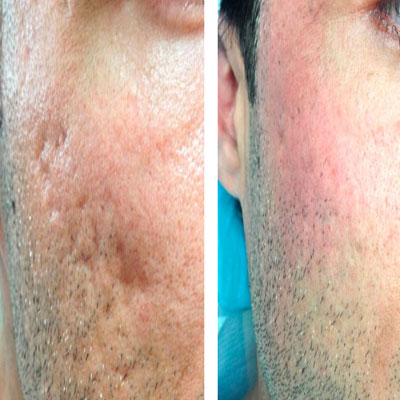
Contact Us
- 52A/28, CY Chintami Road, George Town, Near Bank of Baroda, Prayagraj, Uttar Pradesh. 211002
- drsethsclinic@gmail.com
- +91- 7390884499

- Acne commonly known as pimples.
- It is a skin condition that affects millions of people worldwide.
- It occurs when hair follicles become clogged with oil and dead skin cells, leading to the formation of blackheads, whiteheads, pimples and cysts.
- Acne can appear on the face, neck, chest, back and shoulder.
- Factors such as hormones, genetics, diet, stress and skin care products contribute to acne development.
- Treatment options range from topical creams and medications to procedures like chemical peels, micro-dermabrasion and laser therapy.
- If acne is left untreated can result in unwanted pigmented marks and permanent scars on the skin.
- It is advisable to seek early treatment for acne to prevent post-inflammatory pigmentation and acne scar.
- Normally shedding of skin or hair cells.
- Production of excess sebum by sebaceous glands.
- Hormonal fluctuations.
- (PCOS) Women over 30 commonly experience pre-menstrual flare of acne known as menstrual acne.
- External factors - makeup, oil based creams, excessive amounts of soap or face wash.
- Lack of proper sleep.
A. BLACKHEADS (open comedones) - small dark spots that form when the hair follicles are clogged.
B. WHITEHEADS (closed comedones) - similar to blackheads but covered by a thin layer of skin.
C. PAPULES - small, red, inflamed bumps without pus.
D. PUSTULES - red bump with pus at the centre.
E. NODULES - large, solid, painful lumps.
F. CYST - deep pus filled lumps that are often painful and can cause scarring.
- While acne can be effectively treated, there isn’t a one size fits-all solution for complete eradication.
- Treatment involve a multifaceted approach, including medications, cleans-up, chemical peels and scar treatment plan tailored to each individual based on factors like the severity of the condition, skin analysis and medical history.
